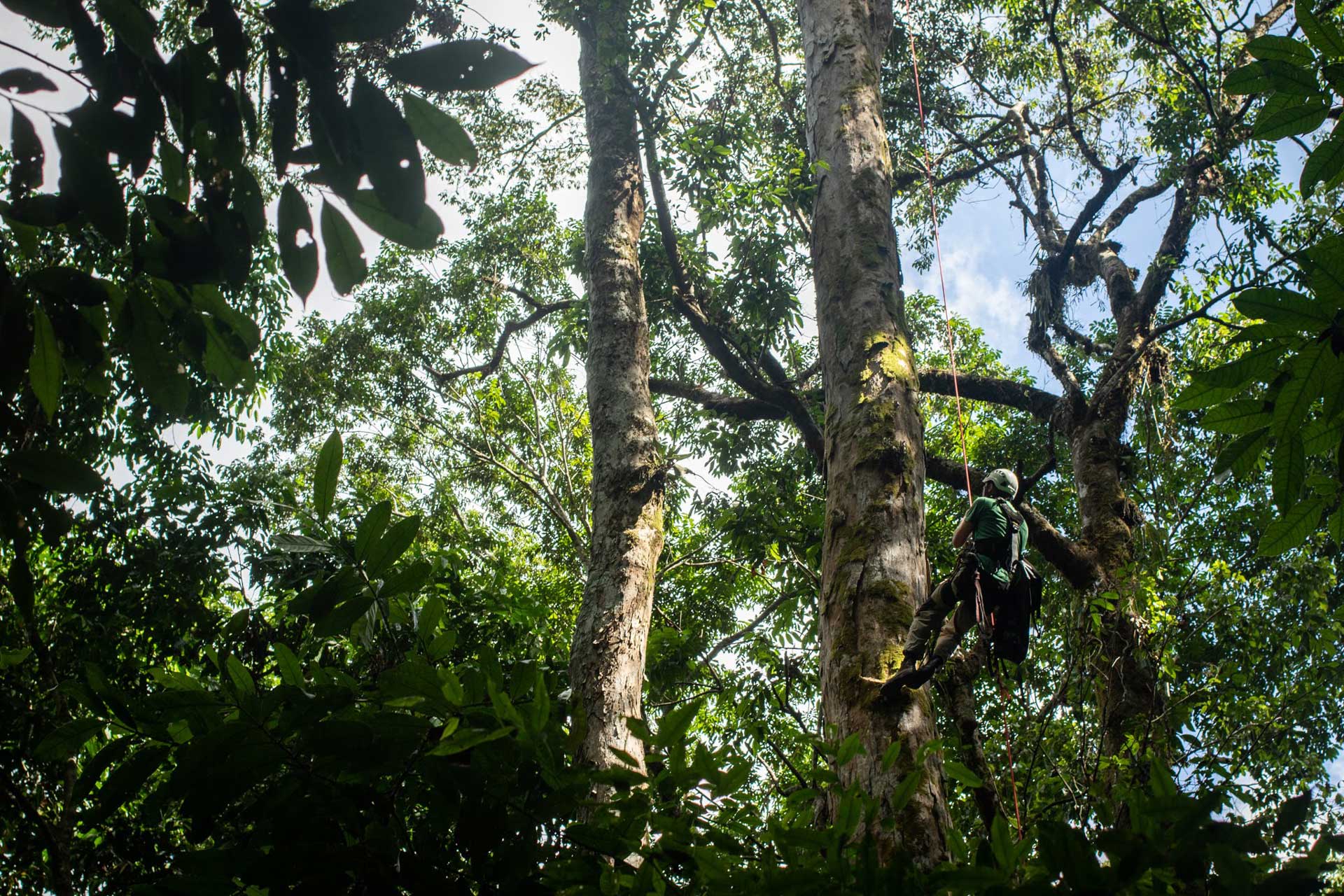
Terminalia oblonga
Terminalia oblonga
Escobo amarillo, Guayabo de monte, Guayabón, Surá
Audio
English Audio
Audio en Español
Plant Story
This tree reaches up to 45 meters and is distinguished from other species for its bark similar to that of a guava tree. Its flowers are pollinated by bees and other insects, and its seeds are dispersed by the wind. The tree’s wood is renowned for its hardness, color, shine, and resistance. It’s also used for the construction of floors, walls, ceilings, beams, railroad ties, and fence posts. It is distributed from Mexico to Brazil; in Costa Rica it grows on both the Atlantic and Pacific slopes from 0 to 900 meters above sea level.
Historia de la planta
Terminalia oblonga es un árbol que llega a alcanzar hasta 45 metros de altura y es característico por su corteza similar a la de un árbol de guayaba Sus flores son visitadas por abejas y otros insectos. Sus semillas son dispersadas por el viento. Su madera es muy apreciada por su dureza, color, brillo y resistencia, además, es utilizada para construcción de pisos paredes, cielos, vigas, durmientes de ferrocarril y postes para cercas. Se distribuye desde México hasta Brasil Y en Costa Rica ocurre en ambas vertientes entre 0 a 900 metros de elevación.
Plant details
Plant Information
Botanic Name:
Terminalia oblonga
Common name(s):
Guayabón, Escobo amarillo, Guayabo de monte, Guayabón, Surá
Family
Combretaceae
Phenology
Flowering Months:
January, December
Fruiting Months:
January, February, March
Conservation
IUCN category:
Least concern / Menor preocupación (LC)
CITES:
Interesting Links
Plant Locations
Guayabón
Plant details
Audio
English Audio
Audio en Español
Story / Historia
Plant Story
This tree reaches up to 45 meters and is distinguished from other species for its bark similar to that of a guava tree. Its flowers are pollinated by bees and other insects, and its seeds are dispersed by the wind. The tree’s wood is renowned for its hardness, color, shine, and resistance. It’s also used for the construction of floors, walls, ceilings, beams, railroad ties, and fence posts. It is distributed from Mexico to Brazil; in Costa Rica it grows on both the Atlantic and Pacific slopes from 0 to 900 meters above sea level.
Historia de la planta
Terminalia oblonga es un árbol que llega a alcanzar hasta 45 metros de altura y es característico por su corteza similar a la de un árbol de guayaba Sus flores son visitadas por abejas y otros insectos. Sus semillas son dispersadas por el viento. Su madera es muy apreciada por su dureza, color, brillo y resistencia, además, es utilizada para construcción de pisos paredes, cielos, vigas, durmientes de ferrocarril y postes para cercas. Se distribuye desde México hasta Brasil Y en Costa Rica ocurre en ambas vertientes entre 0 a 900 metros de elevación.
Plant Information
Botanic Name
Terminalia oblonga
Common name(s)
Escobo amarillo, Guayabo de monte, Guayabón, Surá
Family
Combretaceae
Phenology
Flowering Months
January, December
Fruiting Monts
January, February, March
Conservation
IUCN category
Least concern / Menor preocupación (LC)
CITES
Interesting Links
Plant Locations
Post A Comment
You must be logged in to post a comment.







No Comments